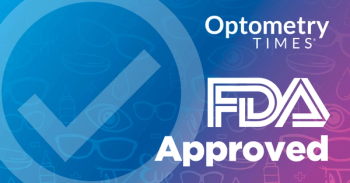
ARVO 2025: The early adoption and utilization of perfluorohexoloctane (Miebo)
Bridgitte Shen Lee, OD, FAAO, FBCLA, FEAOO, discussed research that utilized IQVIA longitudinal prescription claims data from September through November 2023, coinciding with Miebo's FDA approval in September.
Bridgitte Shen Lee, OD, FAAO, FBCLA, FEAOO, presented a poster at ARVO 2025 discussing the early adoption and utilization of perfluorohexoloctane (Miebo), a new medication for dry eye disease. This medication is unique as the first of its kind in the prescription dry eye treatment market, which currently includes 7 FDA-approved medications.
The research utilized IQVIA longitudinal prescription claims data from September through November 2023, coinciding with Miebo's FDA approval in September. The study's methodology involved a rigorous patient selection process with multiple filtering stages to ensure data accuracy. Initially, the data pool contained 12,662 patients prescribed mivo and 465,000 patients prescribed 0.05% cyclosporine. After applying strict selection criteria—including confirmed dry eye diagnosis, prescription filling, and patient age verification—the final sample comprised 7,209 mivo patients and 75,871 cyclosporine patients. The research extended beyond the initial 3-month period, examining patient prescription history from September 2022 and tracking medication usage for 60 days after the last prescription, ultimately covering a period from September 2022 to January 31, 2024.
One of the most significant findings was surprisingly low diagnostic documentation: less than 40% of patients receiving dry eye medication prescriptions had an actual dry eye diagnosis code attached. Shen Lee highlighted this as a potential systemic issue, suggesting eye care professionals might not be consistently documenting dry eye diagnoses. The study's comprehensive approach aims to provide insights into how this new medication is being adopted, patient responses, and prescription patterns. Shen Lee emphasized that a more detailed manuscript would be forthcoming, offering deeper analysis of the collected data.
Additionally, Shen Lee noted that of those who received Miebo, 38.5% had a DED diagnosis. Similarly, 33.3% of patients receiving cyclosporine had a DED diagnosis. "I think overall as ECPs, we need to do a much better job at attaching the right diagnosis code with the prescriptions," Shen Lee said.
The research represents an important contribution to understanding emerging dry eye treatments, medication utilization patterns, and potential gaps in diagnostic documentation. By examining both mivo and cyclosporine prescription data, the study offers a comparative perspective on new versus established dry eye treatments. Shen Lee invited interested professionals to review the poster's detailed data, positioning this research as a valuable resource for eye care practitioners and researchers interested in dry eye disease management.
Newsletter
Want more insights like this? Subscribe to Optometry Times and get clinical pearls and practice tips delivered straight to your inbox.


















































.png)


